Story and Photos by ITN European Reporter Herve’ Rebollo
My last ride, some days ago with one of my (heavy) rider friend Nicholas, took me to UK / England, in London more precisely, to the famous ACE CAFÉ
Let me first introduce Nicholas …by himself: – “When I bought my first Harley, back in 2003, an XL883R Sportster, I had no idea of the world I was entering. I’d had no idea of what MC would stand for; and meeting fellow bikers would always bring to me the same question as when I would meet on a day-off; a colleague from work… Are all these guys genuine? Some choose to ride in large groups, some are more of a lone wolf, I personally enjoy riding in small groups, 4-5 seeming to fit with me. I am from Ireland, a Brit from Belfast, with the major regret of not having joined her Majesty’s military forces. Back in 2003, I was probably in need of some “brotherhood” relationship; the one where you move forward as a team, caring and relying on the bloke standing (riding) next to you. I believe I have found what I was looking for, in sharing today, with those I ride with something special based on concern, respect, something that bounds us together…
My idea of riding? Well weather permitting I’ll bring the bikes out all year round; and maybe shoot-off over the weekends… Living in the Paris region (France) I’ll prefer the 45 minutes on my bike to the 1 hour 30 it would take me to get to work by car. It’s pretty widespread over here to plan a major annual ride, and that’s how back in 2008, I rode my newly purchased Softail around northern Italy; 2009 saw my son and ride north, far beyond the polar circle to the Nordkapp (Norway) on a +5.000 mile run; in 2010, Hervé and I completed the Iron Butt (IBA) first stage (the saddle sore 1000 – 1,000 miles in 21 hours) and then I, 2013 the second stage (the Bun Burner 1500[tm] – 1,500 miles in 32 hours), etc, etc …”.
 Already told you Europe is a small place when compared to Northern America, and France is a place worth discovering. But UK is not too bad too …
Already told you Europe is a small place when compared to Northern America, and France is a place worth discovering. But UK is not too bad too …
So, what about this ride? In fact, Nicholas and I wanted to join the ACE CAFÉ to attend its 26th annual reunion, the BRIGHTON BURN UP.
 But, do you really know what this legendary iconic place, ACE CAFÉ is?
But, do you really know what this legendary iconic place, ACE CAFÉ is?
You’ve probably heard of the Ace Cafe. If you haven’t, you’ve seen pictures of it. Even DAVID UHL issued an artwork in 2013 about the ACE CAFÉ (named A NEW FACE AT THE ACE) …
 Arguably, it’s the place that put “cafe” in “cafe racer,” and when manufacturers want to tap into that market, the first thing they do is run to the Ace. Like in 2014, Triumph honoured the cafe through its special-edition Thruxton Ace.
Arguably, it’s the place that put “cafe” in “cafe racer,” and when manufacturers want to tap into that market, the first thing they do is run to the Ace. Like in 2014, Triumph honoured the cafe through its special-edition Thruxton Ace.
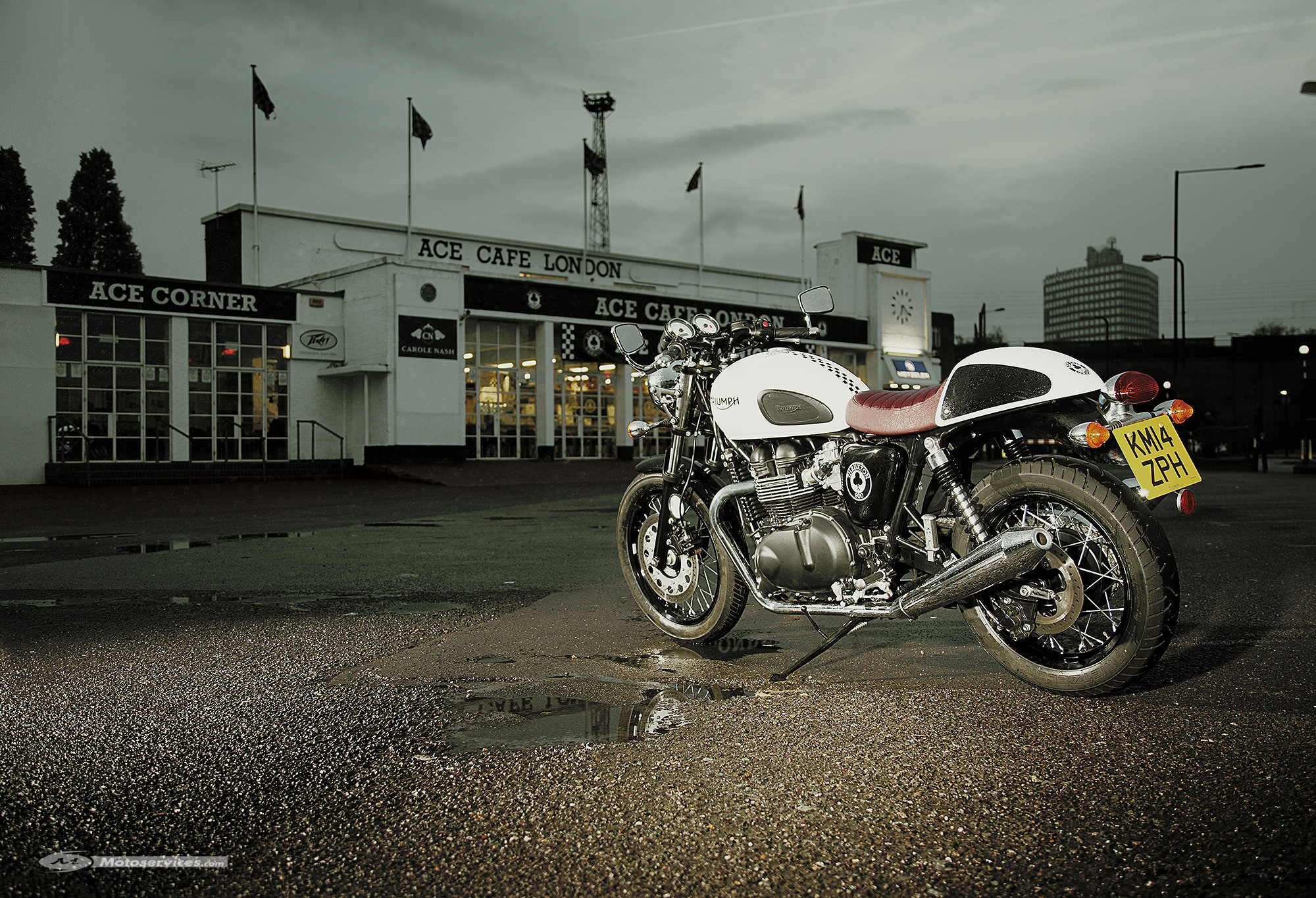 These days, the ACE CAFÉ is a worldwide brand, expanding to Germany, Switzerland, Finland, China, Japan, and soon, the United States.
These days, the ACE CAFÉ is a worldwide brand, expanding to Germany, Switzerland, Finland, China, Japan, and soon, the United States.
 It’s a legacy the cafe’s original owners probably couldn’t have envisioned when it first opened in 1938 on the then brand new North Circular Road surrounding London. It was a simple roadside cafe catering to travellers, particularly truckers. With its proximity to Britain’s fast arterial road network, and being open 24 hours, the Ace Cafe soon attracted motorcyclists too.
It’s a legacy the cafe’s original owners probably couldn’t have envisioned when it first opened in 1938 on the then brand new North Circular Road surrounding London. It was a simple roadside cafe catering to travellers, particularly truckers. With its proximity to Britain’s fast arterial road network, and being open 24 hours, the Ace Cafe soon attracted motorcyclists too.
 Once the cafe was established, the owner’s thoughts turned to the motor trade. In 1939 he opened a service station with a battery of 8 pumps on adjoining land with a spacious washing bay, showroom and repair shop. In World War Two, the building was badly damaged during an air raid on the adjacent railway marshalling yards.
Once the cafe was established, the owner’s thoughts turned to the motor trade. In 1939 he opened a service station with a battery of 8 pumps on adjoining land with a spacious washing bay, showroom and repair shop. In World War Two, the building was badly damaged during an air raid on the adjacent railway marshalling yards.
 After the war the Ace Cafe was reopened in temporary accommodation and subsequently rebuilt in 1949.Long before its ‘greasy spoon’ tag, the cafe/restaurant was actually state-of-the-art, with home-made food being prepared and cooked on the premises.
After the war the Ace Cafe was reopened in temporary accommodation and subsequently rebuilt in 1949.Long before its ‘greasy spoon’ tag, the cafe/restaurant was actually state-of-the-art, with home-made food being prepared and cooked on the premises.
 The Ace Cafe celebrated the Coronation of H. M. the Queen, Elizabeth II in 1953. The post-war increase in road traffic and advent of the ‘teenage’ phenomenon saw the Ace booming, and with it, the arrival of the ‘Ton-Up-Boys’. Ton-Up Boys were named as such because they were driven by the common goal of doing “the ton” — going over 100 miles per hour, which was quite a feat back then. To do so required extensive, methodical modification of one’s motorcycle. To do the ton, motorcycles were modified to maximize speed and handling, not for looks or comfort — although cafe racers ended up being so uniquely stylized that they birthed a whole new and iconic genre of motorcycle that would last for generations to come. Ton-Up Boys would strip their motorcycles down to the absolute bare minimum, removing any and all unnecessary parts that would weigh them down, increase air drag, or detract from the bike’s overall performance. This is how the bikes with a single seat, low bars, no mirrors, underswept pipes, and barely anything else on them were born. They came to be known as “cafe racers” because the transport cafes along the arterial highways were their gathering places.
The Ace Cafe celebrated the Coronation of H. M. the Queen, Elizabeth II in 1953. The post-war increase in road traffic and advent of the ‘teenage’ phenomenon saw the Ace booming, and with it, the arrival of the ‘Ton-Up-Boys’. Ton-Up Boys were named as such because they were driven by the common goal of doing “the ton” — going over 100 miles per hour, which was quite a feat back then. To do so required extensive, methodical modification of one’s motorcycle. To do the ton, motorcycles were modified to maximize speed and handling, not for looks or comfort — although cafe racers ended up being so uniquely stylized that they birthed a whole new and iconic genre of motorcycle that would last for generations to come. Ton-Up Boys would strip their motorcycles down to the absolute bare minimum, removing any and all unnecessary parts that would weigh them down, increase air drag, or detract from the bike’s overall performance. This is how the bikes with a single seat, low bars, no mirrors, underswept pipes, and barely anything else on them were born. They came to be known as “cafe racers” because the transport cafes along the arterial highways were their gathering places.
 The British motorcycle industry was at its peak, and along came Rock ’n’ Roll. Not played on radio stations, initially the only place it could be heard was at fairgrounds or on jukeboxes at transport cafes. The Ace Cafe became the place to meet, have a meal or cup of tea, arrange runs (often to other cafes or the coast) or simply to mend your bike. People came to listen to the jukebox, many subsequently starting bands or clubs, some gaining success and considerable reputation.
The British motorcycle industry was at its peak, and along came Rock ’n’ Roll. Not played on radio stations, initially the only place it could be heard was at fairgrounds or on jukeboxes at transport cafes. The Ace Cafe became the place to meet, have a meal or cup of tea, arrange runs (often to other cafes or the coast) or simply to mend your bike. People came to listen to the jukebox, many subsequently starting bands or clubs, some gaining success and considerable reputation.
 From this powerful fusion of motorbikes and Rock ’n’ Roll came the legends of record-racing, “drop the coin right into the slot”, and race to a given point and back before the record finished. The Ace Cafe, as the birthplace of a new breed of motor bikes – the Cafe Racer – and with its combination of motorbikes, speed and Rock ’n’ Roll was the launchpad for many famous racers and for many bands.
From this powerful fusion of motorbikes and Rock ’n’ Roll came the legends of record-racing, “drop the coin right into the slot”, and race to a given point and back before the record finished. The Ace Cafe, as the birthplace of a new breed of motor bikes – the Cafe Racer – and with its combination of motorbikes, speed and Rock ’n’ Roll was the launchpad for many famous racers and for many bands.
 The famous 59 CLUB was essentially born there, when Father Bill Shergold, a motorcyclist, visited the Ace Cafe and then invited the youths to his church and club. This club then grew into the largest motorbike club in the world.
The famous 59 CLUB was essentially born there, when Father Bill Shergold, a motorcyclist, visited the Ace Cafe and then invited the youths to his church and club. This club then grew into the largest motorbike club in the world.
The tabloid press carried many articles portraying cafes as the places where decent people didn’t go. The building has been used as a cafe, filling station, bookmakers office and latterly a tyre depot. It remains however, largely unaltered.
 The legend of the Ace Cafe lives on in the minds of those who went there, those who wish they went there and those too young to have been there. Changes in the social order, the growth of the car market at the expense of the motorbike industry and the expansion of the motorway network saw the Ace Cafe serving its last egg and chips in 1969.
The legend of the Ace Cafe lives on in the minds of those who went there, those who wish they went there and those too young to have been there. Changes in the social order, the growth of the car market at the expense of the motorbike industry and the expansion of the motorway network saw the Ace Cafe serving its last egg and chips in 1969.
 The Ace Cafe Reunion is the brainchild of Mark Wilsmore. In 1993 he shared his ideas for an annual event to mark the closure of the original Ace Cafe and a book and film documenting the history of the Ace Cafe, and endeavoured to ensure that the original Ace Cafe re-opened, with relevant products being available.
The Ace Cafe Reunion is the brainchild of Mark Wilsmore. In 1993 he shared his ideas for an annual event to mark the closure of the original Ace Cafe and a book and film documenting the history of the Ace Cafe, and endeavoured to ensure that the original Ace Cafe re-opened, with relevant products being available.
 To mark the 25th anniversary of the cafe’s closure, Mark, with friends, formed the organising team for the Reunion and arranged for motorcycle runs to converge at the former Ace Cafe site on Sunday 4 September 1994. The idea was well received by motorcycling organisations and clubs. Media support was sought and the event turned into a major free motorcycle and Rock ’n’ Roll event. It was estimated that over 12,000 people gathered at the old cafe site.
To mark the 25th anniversary of the cafe’s closure, Mark, with friends, formed the organising team for the Reunion and arranged for motorcycle runs to converge at the former Ace Cafe site on Sunday 4 September 1994. The idea was well received by motorcycling organisations and clubs. Media support was sought and the event turned into a major free motorcycle and Rock ’n’ Roll event. It was estimated that over 12,000 people gathered at the old cafe site.
Annual Reunions, known as ‘Ace Days’, have taken place on historic ground: Brighton’s famous Madeira Drive.
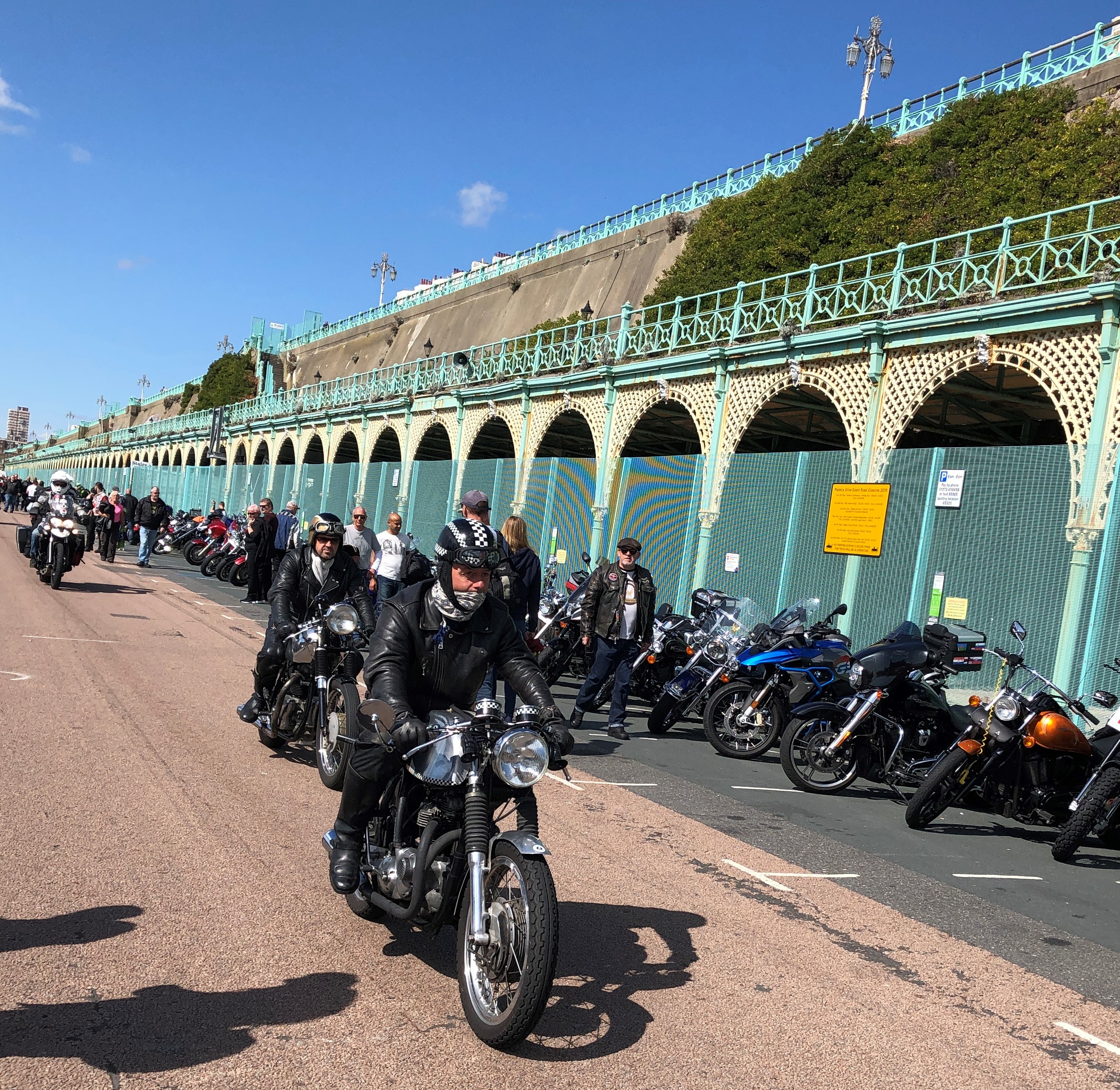 With the Grand Opening of the original London premises, the Ace Cafe Reunion Weekend has developed into the critically acclaimed ‘world‘s coolest motorbike event‘, attracting every September tens of thousands of Riders partaking in the Brighton Burn Up Run from the Ace Cafe to gather for a free to attend motorbike and rock ’n’ roll party on Madeira Drive.
With the Grand Opening of the original London premises, the Ace Cafe Reunion Weekend has developed into the critically acclaimed ‘world‘s coolest motorbike event‘, attracting every September tens of thousands of Riders partaking in the Brighton Burn Up Run from the Ace Cafe to gather for a free to attend motorbike and rock ’n’ roll party on Madeira Drive.
 Planning permission was obtained and ACE CAFE LONDON bought the original Ace Cafe site. As from 7 December 1997, a part of the original and legendary Ace Cafe site was re-opened on Fridays, Saturdays, Sundays, Bank Holidays and on the first Wednesday of every month. The riders enjoy themselves whilst having a a cup of tea or coffee and exchanging the latest news and gossip from the biking world. The Sunday openings have been enthusiastically received and the plans to re-open the complete site are being pursued.
Planning permission was obtained and ACE CAFE LONDON bought the original Ace Cafe site. As from 7 December 1997, a part of the original and legendary Ace Cafe site was re-opened on Fridays, Saturdays, Sundays, Bank Holidays and on the first Wednesday of every month. The riders enjoy themselves whilst having a a cup of tea or coffee and exchanging the latest news and gossip from the biking world. The Sunday openings have been enthusiastically received and the plans to re-open the complete site are being pursued.
 Every type and style of bikes have turned out, representing an impressive kaleidoscope from the fifties to the nineties. The refreshments are served up by Bob and his crew.
Every type and style of bikes have turned out, representing an impressive kaleidoscope from the fifties to the nineties. The refreshments are served up by Bob and his crew.
 On 6 March 1999 a main London water supply pipe burst approximately 10 feet below the Ace Cafe forecourt. Bikes were flung into the air, disappearing in the torrent as they landed. The foaming white jet of water pitched tarmac, earth and rocks in all directions breaking windows and showering the building with assorted debris. Mark dashed back to check that everyone had got out safely, but some had run outside to rescue their bikes. By this time the water was coming through the door. The emergency services were called. Meanwhile, the water found a natural course onto the new North Circular Road underpass at the A406 Park Royal Estate junction, which became flooded to a height of over 25 feet.
On 6 March 1999 a main London water supply pipe burst approximately 10 feet below the Ace Cafe forecourt. Bikes were flung into the air, disappearing in the torrent as they landed. The foaming white jet of water pitched tarmac, earth and rocks in all directions breaking windows and showering the building with assorted debris. Mark dashed back to check that everyone had got out safely, but some had run outside to rescue their bikes. By this time the water was coming through the door. The emergency services were called. Meanwhile, the water found a natural course onto the new North Circular Road underpass at the A406 Park Royal Estate junction, which became flooded to a height of over 25 feet.
At the end, Nicholas and I spent four days in UK. It was a really good funny sunny time … exept on Monday morning, backing from Brighton to Dover to join our ferry, two and a half hours of a real rainy English weather … totally drenched … rainsuits at the end absolutely unuseful … one more great motorcycle wet experience …). The Saturday afternoon we spent riding in London town center was absolutely fantastic.

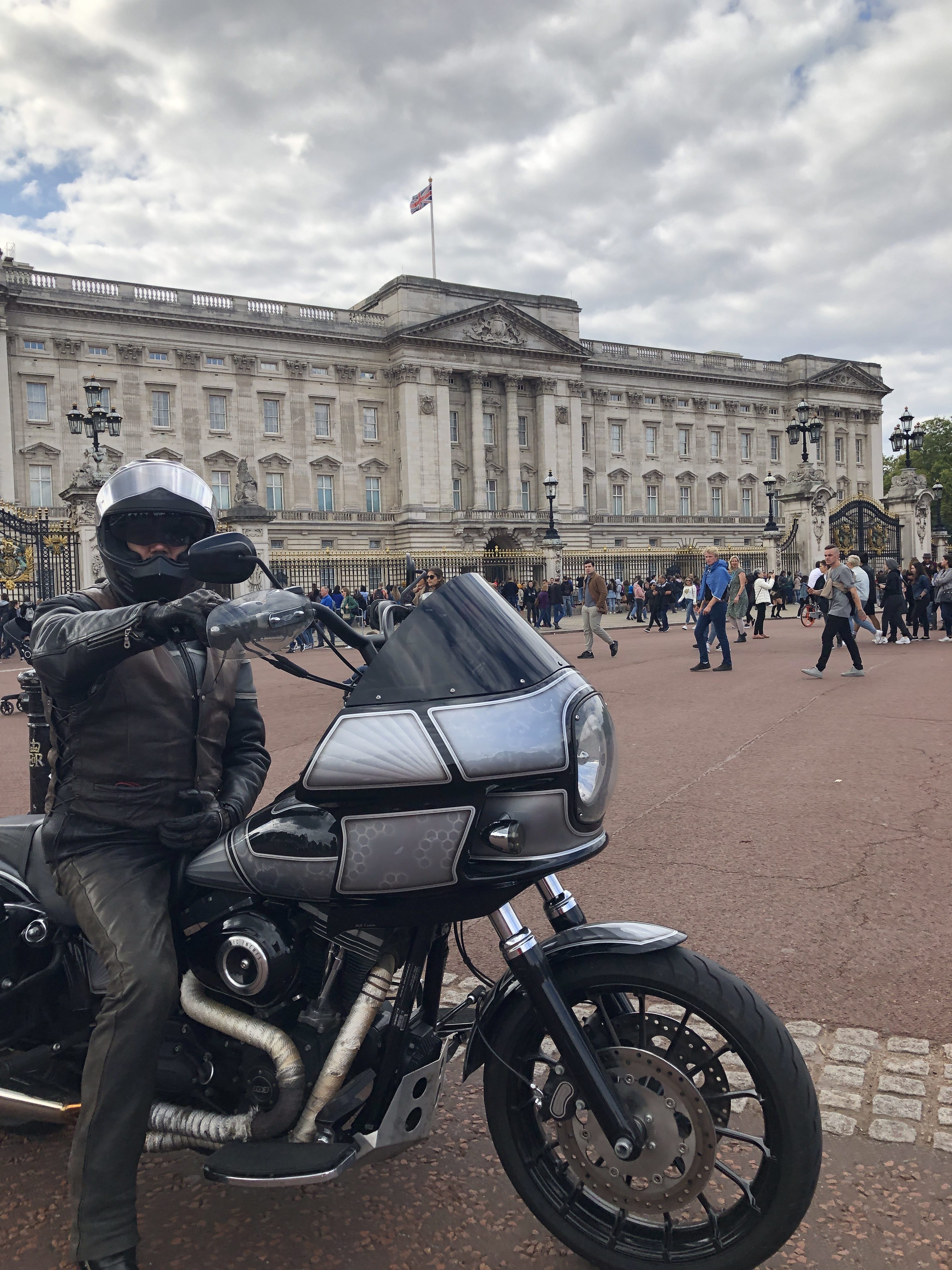 Next time you will come to Europe let’s make a stop at the ACE CAFÉ my American friend, just to be able to tell your biker friends you visited a legendary motorcycle place.
Next time you will come to Europe let’s make a stop at the ACE CAFÉ my American friend, just to be able to tell your biker friends you visited a legendary motorcycle place.
See ya soon on the road (who knows?)
Hervé your French biker friend
https://en.wikipedia.org/wiki/Ace_Cafe






















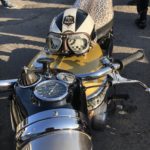

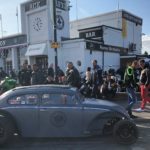


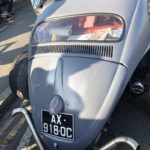


























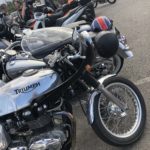


















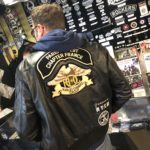





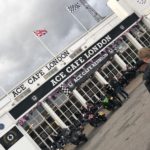








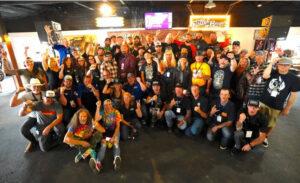

More Stories
RIDE TO THE GALLO-ROMAN SITE IN THE CENTER OF FRANCE
RIDE TO THE CASTLES
RIDE TO THE VALENCIA MARKET